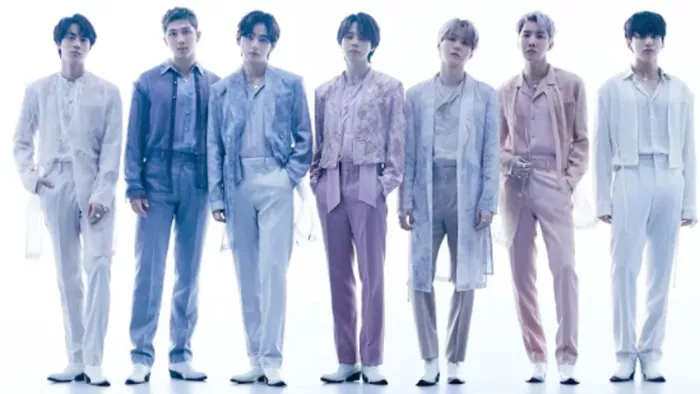In the vibrant and ever-evolving landscape of South Korean pop culture, determining the number one artist is a complex and multifaceted task. The Korean entertainment industry, commonly known as “Hallyu” or the Korean Wave, has witnessed an unprecedented global surge in popularity in recent years, propelling numerous artists to international fame. From K-pop idols to actors, directors, and visual artists, the country boasts an impressive array of talent that has captivated audiences worldwide. This article aims to delve into the dynamic world of Korean entertainment, exploring the diverse facets that contribute to defining the number one artist in Korea.
The K-Pop Phenomenon: A Global Sensation
When discussing the number one artist in Korea, it’s nearly impossible to overlook the immense impact of K-pop. This genre has revolutionized the music industry, transcending geographical boundaries to become a global phenomenon. K-pop groups like BTS, BLACKPINK, EXO, and TWICE have achieved unprecedented success on the international stage, garnering immense popularity and amassing dedicated fanbases worldwide.
Among these, BTS, the septet formed by Big Hit Entertainment, has emerged as a dominant force in the global music scene. Their groundbreaking achievements, including topping charts, selling out stadiums, and addressing the United Nations, have elevated their status to an unprecedented level. The question of “Who is the number one artist in Korea?” often leads to discussions centered around BTS due to their unparalleled influence and contribution to spreading Korean culture worldwide.
Beyond Music: The Influence of Actors and Actresses
While K-pop undeniably dominates a significant portion of Korea’s entertainment industry, the realm of Korean dramas and films also plays a pivotal role in shaping the country’s cultural exports. Actors and actresses who grace the screens with their compelling performances hold a special place in the hearts of fans worldwide.
Actors like Kim Soo-hyun, Song Joong-ki, and Park Shin-hye have garnered immense popularity not only in Korea but also internationally. Their talent, versatility, and ability to portray diverse characters with depth and authenticity have contributed significantly to the global appeal of Korean entertainment. When pondering “Who is the number one artist in Korea?” the influence and contributions of these esteemed actors cannot be overlooked.
Rising Stars and Cultural Icons
Beyond the established names, Korea continues to produce a new generation of talent, constantly pushing boundaries and redefining the entertainment landscape. From rising K-pop groups like Stray Kids and aespa to emerging actors and actresses such as Jang Ki-yong and Kim Da-mi, the industry is ripe with promising newcomers making their mark.
Moreover, cultural icons like Psy, who achieved unprecedented global fame with “Gangnam Style,” and the immensely popular variety show hosts Yoo Jae-suk and Park Na-rae contribute significantly to shaping Korea’s entertainment scene. The question of “Who is the number one artist in Korea?” becomes even more intriguing when considering the eclectic mix of established stars and budding talents who captivate audiences through their diverse contributions.
Artistic Diversity: Exploring Visual Arts and Beyond
While music and acting take center stage in Korea’s entertainment industry, the realm of visual arts, including painting, sculpture, and photography, also boasts remarkable talents. Internationally acclaimed artists like Lee Bul, known for her thought-provoking installations, and Do Ho Suh, renowned for his architectural sculptures, have gained recognition on the global art stage, showcasing Korea’s rich artistic heritage.
Furthermore, the influence of Korean cinema, characterized by its innovative storytelling and cinematic brilliance, extends beyond the borders. Directors like Bong Joon-ho, Park Chan-wook, and Lee Chang-dong have received critical acclaim, winning prestigious awards at renowned film festivals and captivating audiences with their distinctive storytelling prowess.
As the question of “Who is the number one artist in Korea?” lingers, the diversity and depth of talent across various artistic spheres underline the multifaceted nature of the country’s creative landscape.
Factors Defining the Number One Artist
Determining the number one artist in Korea involves considering various factors that contribute to their prominence and influence. Firstly, popularity and fanbase size serve as tangible metrics, especially in the age of social media dominance. Artists with massive followings and strong engagement often wield significant influence in defining cultural trends and shaping public perception.
Moreover, artistic achievements, including album sales, chart-topping hits, box office successes, and critical acclaim, contribute to an artist’s standing within the industry. Awards and recognition, both domestically and internationally, also play a crucial role in establishing an artist’s prominence and validating their impact on a global scale.
Furthermore, an artist’s cultural impact, beyond the realm of entertainment, can significantly influence their standing. Social initiatives, philanthropic endeavors, and advocacy work often elevate an artist’s reputation, portraying them as influential figures beyond their artistic endeavors.
The Evolving Nature of Fame and Success
In the digital age, the concept of fame and success has undergone a transformation, with social media platforms providing a direct and immediate connection between artists and their audience. The rise of platforms like YouTube, Twitter, Instagram, and TikTok has democratized fame, allowing artists to reach global audiences independently, beyond traditional industry structures.
The question of “Who is the number one artist in Korea?” has thus evolved, encompassing not only traditional measures of success but also an artist’s ability to leverage digital platforms, engage with fans, and adapt to the rapidly changing dynamics of the entertainment landscape.
Conclusion
The quest to determine the number one artist in Korea is a complex and subjective endeavor, influenced by a myriad of factors encompassing music, acting, visual arts, cultural impact, and evolving notions of fame and success. From K-pop sensations like BTS to acclaimed actors, emerging talents, and visionary directors, Korea’s entertainment industry boasts a diverse tapestry of artists who continue to captivate global audiences with their creativity and talent.
Ultimately, the answer to “Who is the number one artist in Korea?” may vary depending on personal preferences, cultural influences, and the evolving nature of the entertainment landscape. However, what remains indisputable is the immense talent, innovation, and cultural impact of Korean artists that have propelled the country’s entertainment industry to unprecedented global heights.

























